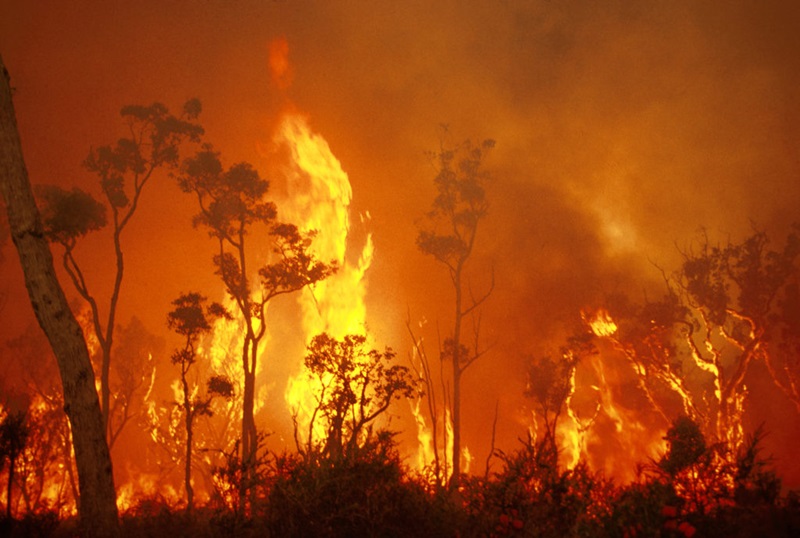Crafting Your Home's Safety: A Step-by-Step Bushfire Management Plan Overview
Crafting Your Home's Safety: A Step-by-Step Bushfire Management Plan Overview
Blog Article
Necessary Tips for Bushfire Monitoring to Guarantee Fire Security

Understanding Bushfire Threat Levels
Comprehending the differing degrees of bushfire risk is important for reliable preparation and preparation in mitigating prospective threats to lives and residential or commercial properties. Bushfire risk levels are typically categorized based upon variables such as climate condition, gas schedule, topography, and historic fire behavior. By understanding these threat neighborhoods, individuals and levels can proactively implement strategies to decrease vulnerability and boost durability when faced with prospective bushfire occasions.
The very first level of bushfire danger is reduced risk, where the likelihood of a bushfire happening and triggering substantial harm is minimal. This level typically happens during periods of reduced temperature levels, moderate humidity, and minimal wind speeds. Modest threat levels suggest an enhanced potential for bushfires due to rising weather condition problems or fuel availability. Risky levels indicate a substantial threat, with problems conducive to fast fire spread and extreme fire habits. Extreme danger degrees are the most critical, presenting brewing threat to buildings and lives because of extreme weather condition conditions and highly combustible fuels.
Understanding these bushfire risk degrees makes it possible for stakeholders to tailor their readiness and response activities as necessary, ensuring a proactive and reliable technique to bushfire management.
Developing a Defensible Area
Efficient bushfire monitoring starts with developing a defensible area around properties to enhance defense versus possible fire hazards. A defensible space is a barrier area that produces a barrier in between a structure and the bordering flammable plants. This area functions as a vital line of protection, offering firefighters a safe area to run and assisting to reduce the threat of a fire infecting the residential property.
When developing a defensible space, it is necessary to consider the format of the residential or commercial property and the surrounding landscape. Clearing up greenery, specifically highly combustible plants, within a certain span of the property can aid avoid the fast spread of fires. Furthermore, preserving a well-irrigated area around the home can even more enhance its defensibility.
Routine upkeep of the defensible area is crucial to ensure its efficiency. This consists of cutting overhanging branches, getting rid of dead plant life, and maintaining the location totally free of debris. By investing effort and time into creating and preserving a defensible room, property owners can dramatically enhance their chances of shielding their homes and assets throughout a bushfire.
Implementing Fire-Resistant Landscaping
When developing landscapes to mitigate the threat of bushfires, incorporating fireproof aspects is vital for enhancing property security and lowering fire dangers. Select plants with high dampness content, low oil content, and very little dead greenery to reduce the threat of fire spread.

Developing an Emergency Situation Discharge Plan
Establishing a thorough emergency discharge strategy is important for guaranteeing the security and health of individuals throughout prospective bushfire occurrences (BMP). A reliable evacuation plan need to describe clear procedures to follow in the occasion of a bushfire risk, consisting of assigned emptying paths, setting up points, and communication procedures
To start producing an emergency emptying plan, it is necessary to assess the particular threats and susceptabilities of your area. Identify several discharge routes that result in risk-free locations far from the fire, considering factors such as terrain, road availability, browse around this web-site and prospective risks. Establish communication channels to alert locals of an approaching discharge, utilizing approaches such as sirens, text alerts, or door-to-door alerts.
Regularly testimonial and exercise the emptying strategy with all homeowners or neighborhood participants to ensure everybody comprehends their functions and obligations. Conduct drills to examine More hints the effectiveness of the strategy and make any required changes. By having a well-prepared evacuation plan in location, you can boost the chances of a orderly and safe evacuation during a bushfire emergency.
Preserving Fire Safety Equipment
After developing a thorough emergency situation evacuation prepare for bushfire events, it is essential to focus on the routine maintenance of fire security devices to ensure ideal functionality and preparedness. Routine maintenance of fire security devices such as fire extinguishers, smoke detectors, fire alarm systems, and lawn sprinkler is crucial in protecting lives and building during a bushfire. When needed., conducting routine evaluations, testing, and servicing of these tools by certified specialists is necessary to assure they are in working order.
Fire extinguishers must be checked regularly for stress degrees, noticeable damages, and proper performance. By faithfully keeping fire safety and security equipment, people can boost their readiness and check that feedback abilities in the event of a bushfire.
Verdict
In verdict, effective bushfire administration entails comprehending danger levels, developing defensible spaces, executing fireproof landscaping, establishing discharge plans, and keeping fire security equipment. By complying with these important tips, people can make sure better fire security and safety for their residential or commercial properties and areas. It is essential to focus on positive measures to minimize the risks connected with bushfires and to be planned for emergency situations.
By comprehending the subtleties of bushfire threat degrees, developing defensible areas, implementing fire-resistant landscape design, producing extensive evacuation plans, and guaranteeing the maintenance of fire safety and security equipment, individuals and neighborhoods can considerably strengthen their resilience against the ravages of wildfires - Bushfire Risk. These pointers are not just crucial for securing versus immediate fire hazards yet additionally for fostering long-term fire protection methods that can make a considerable difference in the face of rising bushfire threats
High-risk levels indicate a substantial threat, with conditions favorable to fast fire spread and severe fire actions. Normal upkeep of fire safety and security devices such as fire extinguishers, smoke detectors, fire alarms, and lawn sprinkler systems is crucial in safeguarding lives and building during a bushfire.In final thought, effective bushfire monitoring entails comprehending danger levels, creating defensible areas, implementing fire-resistant landscape design, establishing emptying strategies, and preserving fire security tools.
Report this page